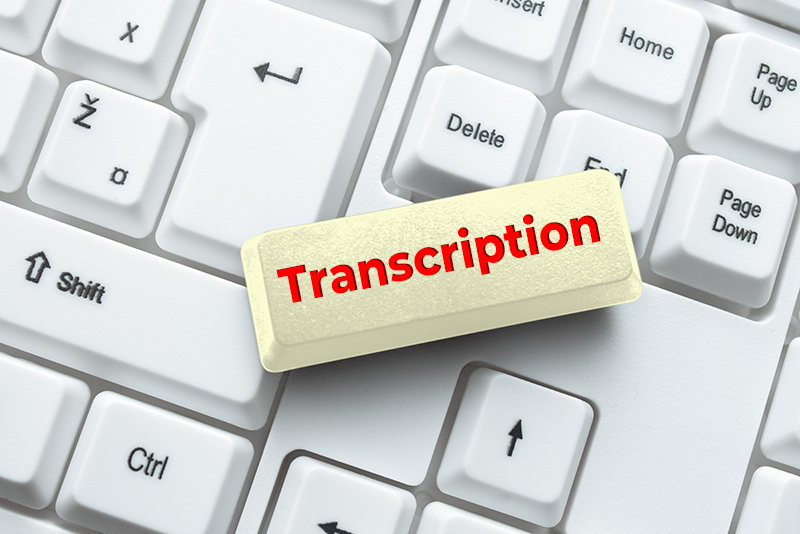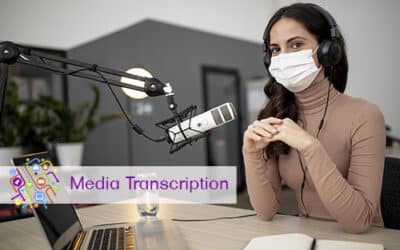
Whether you are doing your own transcription or using a business transcription service, converting audio to text can take time. In fact, most industries now prefer to outsource the task to professionals to obtain accurate written documents in quick turnaround time (TAT). It can help to understand how experts provide high quality transcripts to meet client needs.
Here is a list of simple hacks to increase transcription efficiency and lower TAT.
Ways to Ramp Up Transcription Accuracy and Speed
- Practice typing: For professional transcriptionists, typing speed matters as they have to meet client deadlines. Though the average is 40-60 words a minutes, experts can type 80-100 words a minute from good audio. To improve typing speed and efficiency, practice typing correctly without looking at the keyboard. Ensure proper hand and finger placement and sit properly at the computer. Keep your shoulders relaxed by adjusting keyboard height and ensure that your elbows are in a slightly open position, and your wrists and hands are straight. There are online courses that can help you improve your ten-finger typing skills, and increase speed and accuracy.
- Use a quality noise cancellation headset: Noisy audio is a major deterrent to transcription accuracy and speed. Headsets filter out noise that would otherwise disrupt audio clarity and increase your concentration. Elimination of background noises calls for the use of a high quality headset. Invest in a headphone that has a sturdy build and design, and offers well-balanced sound. Good headphones are also lightweight and comfortable and protect the ears – keep in mind that it can take about 3 to 10 hours to transcribe one hour of audio, depending on various factors. According to Audiovisor, the best products for transcription are Sony MDR7506, Bose QuietComfort 35 II, Audio-Technica ATH-M40x, Sennheiser HD 280 PRO and Logitech H570e.
- Leverage software and other tools: Using the mouse to stop/rewind/slow down difficult-to-understand audio recordings that listen to them more closely, can be very time consuming. Each time you do this, you would have to take your hands off the keyboard and click the mouse, which interrupts work flow, and makes it a challenge to catch every word. Professional transcriptionists use special transcription software and other tools that enables audio playback without using the mouse.
- Foot pedal: With transcription software, you can pause or rewind the audio source while transcribing using a foot pedal. Controlling playback with your foot frees up your hands for typing or editing while you listen to the audio. Digital foot pedals are plug-and-play, and considered invaluable, time-saving devices by most transcriptionists.
- “Hot keys”: If you decide not to invest a foot pedal, you can use hot keys. This option involves using the numeric keypad or function keys to configure your transcription program to control audio playback. For instance, FTW Transcriber’s Keyboard has three hotkeys to control speed: INCREASE SPEED and DECREASE SPEED, and SPEED TOGGLE. The first two change playback speed by 10% each time they are pressed and SPEED TOGGLE switches the playback speed between the current speed and the speed in the “set” box on the software main interface. Transcriptionists use SPEED TOGGLE to play back difficult audio at a slower speed and understand unclear words.
- Word expander software: Text expanders such as Instant Text by Textware Solutions and Shorthand for Windows improve typing accuracy and TAT. Text expanders provide a fast and easy way to insert snippets, such as block text, signatures, email addresses, images, etc., as you type. You set up your own keyboard shortcuts using abbreviations to enter regularly used text, which the software will expand into the full word(s). Here are examples of abbreviations for commonly used phrases in business communication: “tsm” for “thanks so much; “btyb” for I’ll get back to you by,” and “iirc” for “if I remember correctly”. It is estimated that, when used properly, text expanders can increase your typing speed by 30%.
- Autocorrect: Spelling mistakes can occur as you type out transcripts and you would lose a lot of time if you have to go back to correct them. With a computer’s autocorrect feature you can reduce the number of keystrokes while typing. For instance, Word’s autocorrect is usually turned on by default and ensure spelling accuracy as you type, improving transcription speed and accuracy. Autocorrect is especially useful to transcribe speaker labels for group sessions in video format – all you have to do is to automatically insert speaker labels such as Speaker 1, Speaker 2, and so on.
- Use automatic software: With well-recorded audio, automatic transcription software can generate a transcript quickly. Simply upload the audio or video file or files to the speech recognition software and it will create the first draft from the recording, which is about 80-90 percent accurate. The software can handle multiple files, saving up to 70-80% of your time that would have gone into typing everything manually. Quality programs also insert timestamps into transcripts.
- Voice type with dictation software: Today, there are several voice recognition tools that you can choose from to have your dictation transcribed automatically. The text appears on the screen as you dictate and you can edit it as you go along using your keyboard. Voice typing is faster than manual typing and the software can be trained on jargon and unconventional words/spelling that you use. Popular dictation software include Dragon Speech Recognition Solutions, Google Docs Voice Typing, Apple Dictation, Winscribe, Speechnotes, Otter, Rev, and Tem. However, while these programs can reduce finger fatigue associated with long typing sessions, accuracy can be a problem.
Once you learn to use them, these strategies can help you save time and increase your efficiency. However, when it comes to ensuring accuracy, there would be extra work and time involved. For instance, when you use Word expander software or autocorrect, you would need to carefully check the whole text to ensure that the autocorrect has not changed your word into something completely different, for instance, peace vs. piece or there vs. their. The best option when it comes to large volume work that requires high accuracy is to work with an expert. Digital transcription agencies can provide quality transcripts that are up to 99 percent accurate in quick turnaround time.



